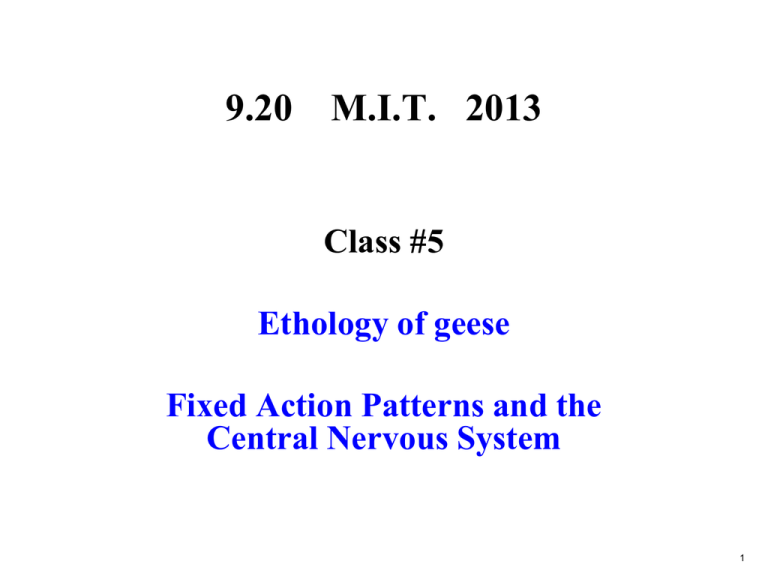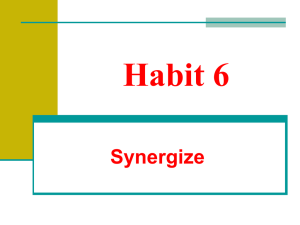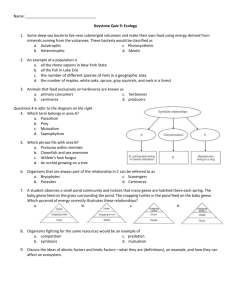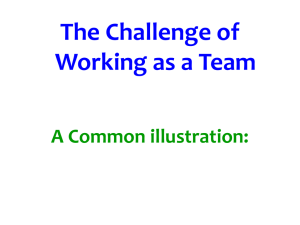9.20 M.I.T. 2013 Class #5
advertisement

9.20 M.I.T. 2013 Class #5 Ethology of geese Fixed Action Patterns and the Central Nervous System 1 Video: Konrad Lorenz and his geese, recorded from WGBH-TV, “Wild, Wild World of Animals” • • • • Discovery of imprinting Nature of imprinting Natural responses to predators by geese Imprinting and development of social life by geese 2 Video: Konrad Lorenz and his geese, recorded from WGBH-TV, “Wild, Wild World of Animals” • Discussion: Is the response of geese to an aerial predator innate? – Experiments with exposure of naïve geese to a moving silhouette: 3 Video: Konrad Lorenz and his geese, recorded from WGBH-TV, “Wild, Wild World of Animals” • Discussion: Is the response of geese to an aerial predator innate? – Experiments with exposure of naïve geese to a moving silhouette: Moved in this direction: Fear/ mobbing response Turkeys and chickens appeared to be sensitive to shape, as shown. Geese were not. They respoinded to overhead movement that is slow with respect to size (calm gliding) like the appearance of a hunting white-tailed eagle. Moved in this direction: No such responses Cf. ducks: Their innate releasing mechanism appeared to be tailored more to falcons. 4 A more recent analysis: Schleidt, W., Shalter, M. D., & Moura-Neto, H. (2011, February 21). The Hawk/Goose Story: The Classical Ethological Experiments of Lorenz and Tinbergen, Revisited. Journal of Comparative Psychology. Advance online publication. doi: 10.1037/a0022068 Conclusion: Although there appear to be some innate reactions of these birds, the major differences in observed reactions of geese, ducks, turkeys, and chickens to gliding hawk and goose shapes can be explained as the result of differences in the relative novelty of stimulus encounters. Hawks and other raptors are seen relatively rarely in comparison to birds with goose and duck shapes. The most novel stimulus patterns are the ones that cause the anti-predator responses. In addition, these birds are able to learn from experience to fear certain birds and other animals. 5 Scott ch 2, “Controlling behavior: the role of the nervous system” 1. Yawning is a human “fixed action pattern” (FAP). Name three other FAPs shown by humans. 6 Other examples: Discussion: • Smiling, frowning, many other expressions of emotion • Walking (multipurpose action) • Eyeblink • Swallowing • And a great many others! But are these all FAPs, and not “just reflexes”? Is an FAP just a complex reflex? In the above list, eyeblink and swallowing are usually referred to as reflexes. Next: Graham Scott vs. many ethologists. 7 Scott ch 2, “Controlling behavior: the role of the nervous system” 2. Unlike Graham Scott, many ethologists distinguish FAPs from reflexes. How do you think these types of actions can be distinguished? Give examples. (Scott uses “reflex” to mean automatic and at least initially unlearned.) You should learn Lorenz’ view, where FAPs and reflexes are clearly distinguihable. 8 Scott ch 2, “Controlling behavior: the role of the nervous system” 2. Unlike Graham Scott, many ethologists distinguish FAPs from reflexes. How do you think these types of actions can be distinguished? Give examples. (Scott uses “reflex” to mean automatic and at least initially unlearned.) Konrad Lorenz' term "Action Specific Potential" is an internal level of activation of a drive. It has been called a "central motive state" by Peter Milner (Canadian physiological psychologist), and a "drive" by many others. An ASP builds up over time, increasing the probabilility of discharge of the motor action. Stimulus thresholds for eliciting the fixed motor pattern become lowered more and more as the ASP increases. This happens for FAPs, not for reflexes. The threshold for triggering a reflex can change, but it does not become lowered over time as some internal state changes by an endogenous build-up. The "mantle of reflexes" are something an animal is always "wearing" -- it is part of the routine maintenance activity of the nervous system. Reflexes do not have an underlying motivation that builds up inexorably over time. 9 Scott ch 2, “Controlling behavior: the role of the nervous system” 3. Give an example of a “supernormal stimulus” that acts as a releaser of a fixed action pattern in herring gull chicks. (See p 21) 10 MIT OpenCourseWare http://ocw.mit.edu 9.20 Animal Behavior Fall 2013 For information about citing these materials or our Terms of Use, visit: http://ocw.mit.edu/terms.



